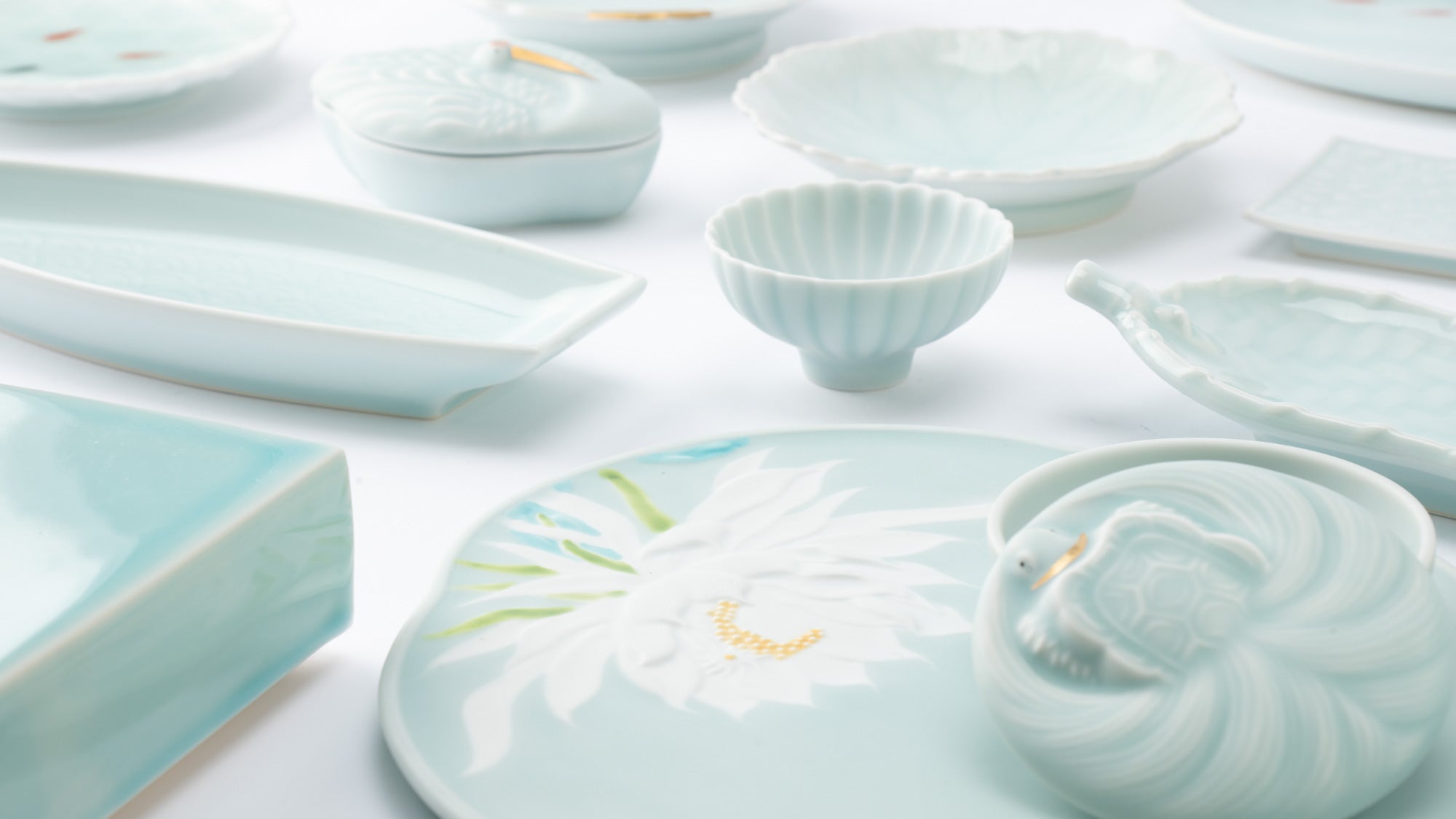
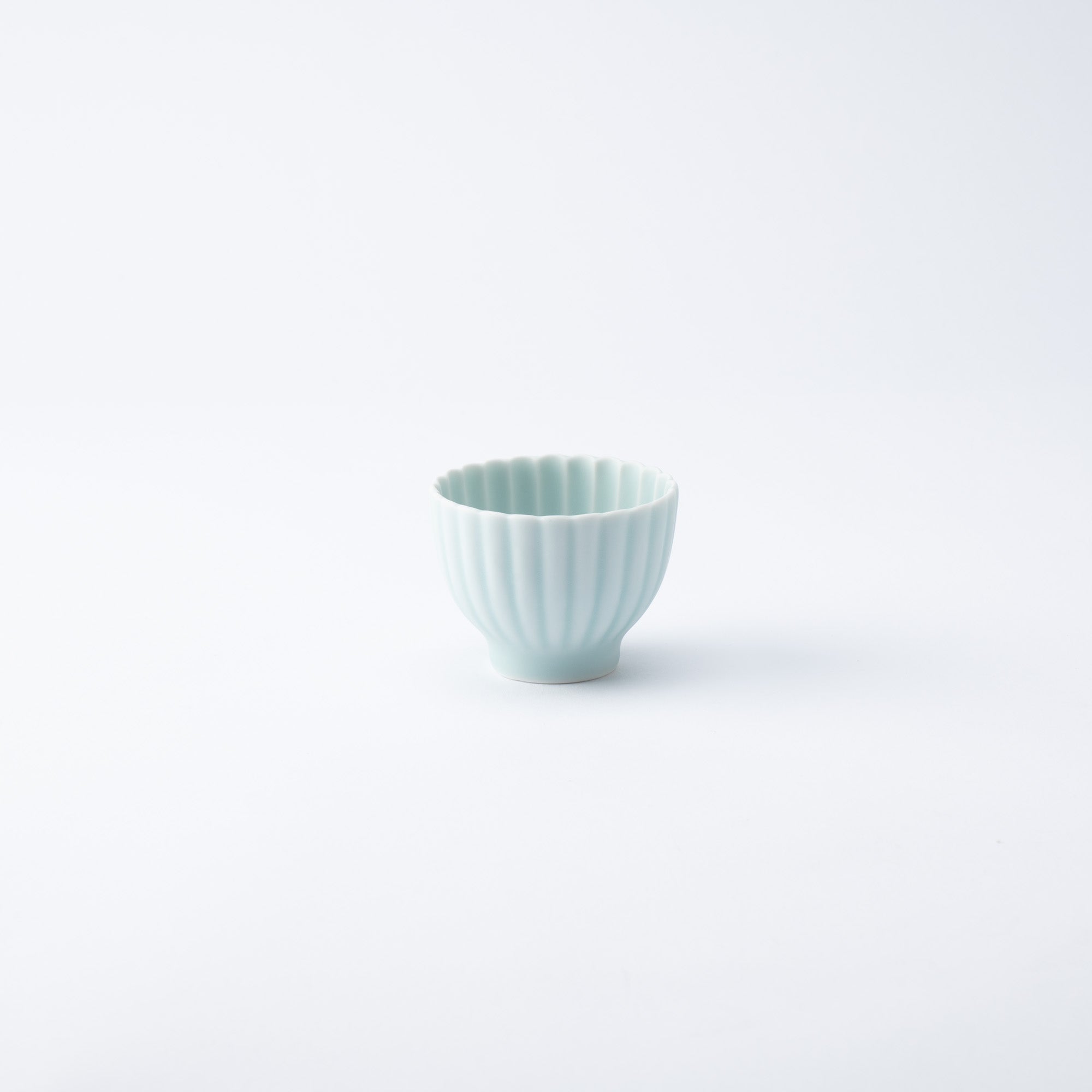
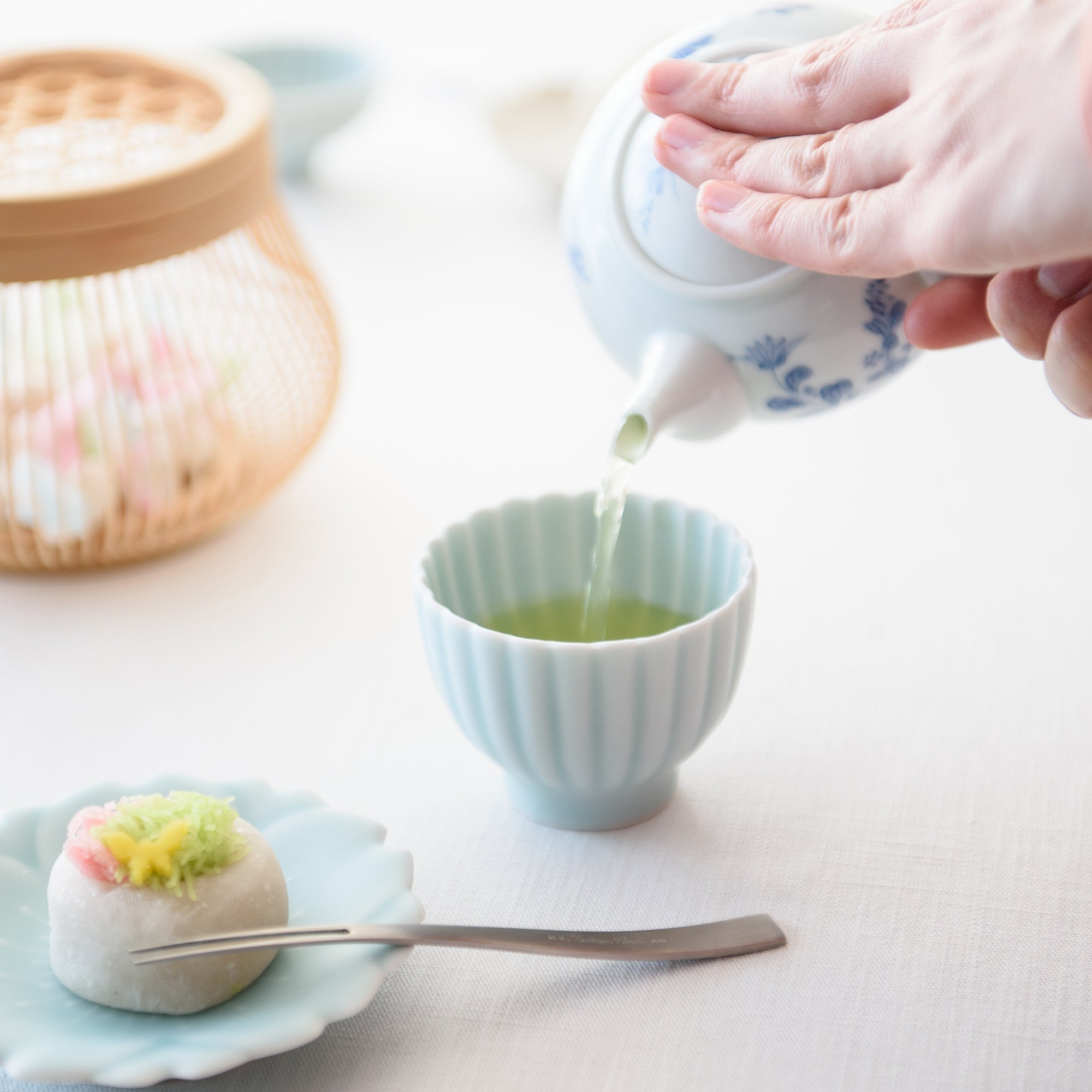
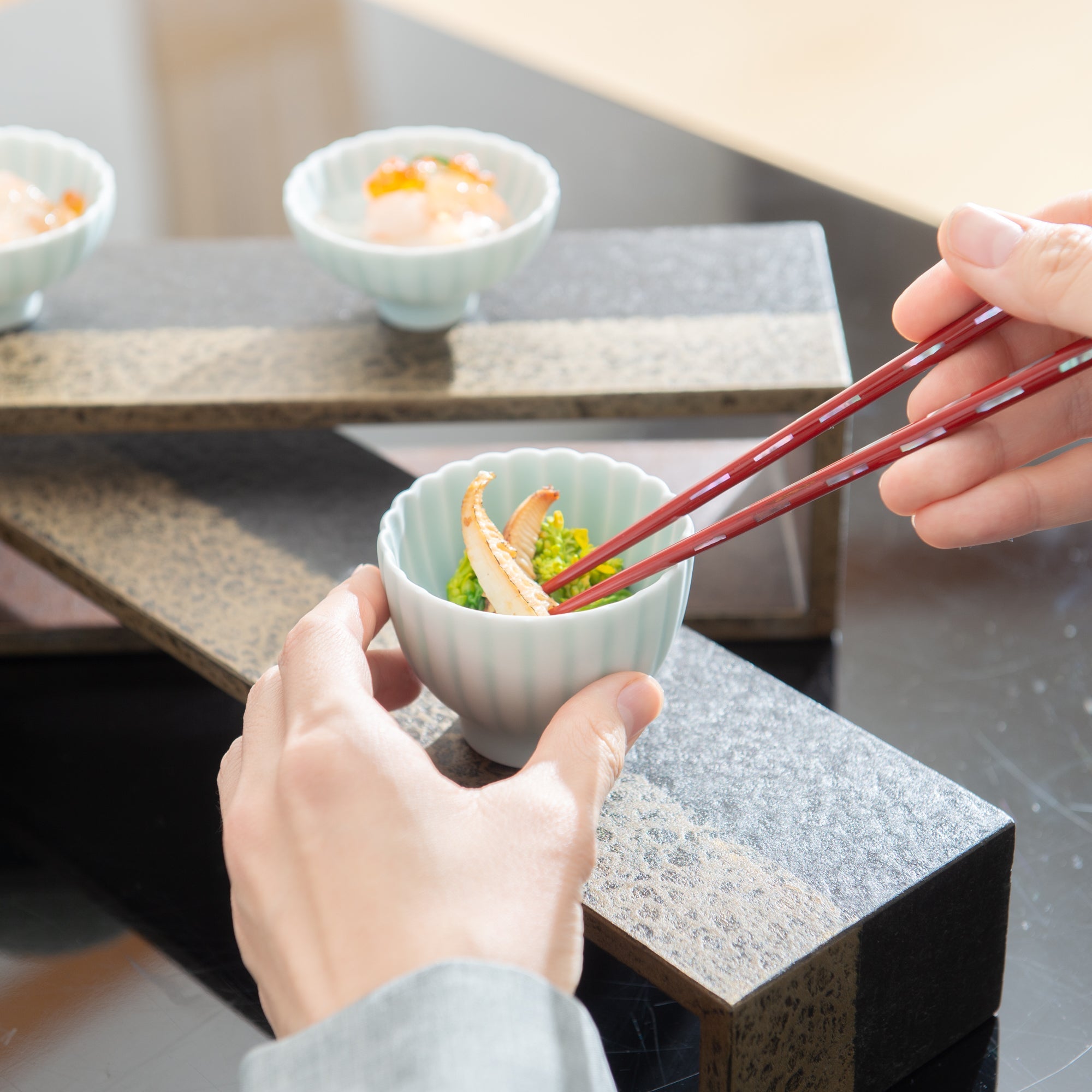
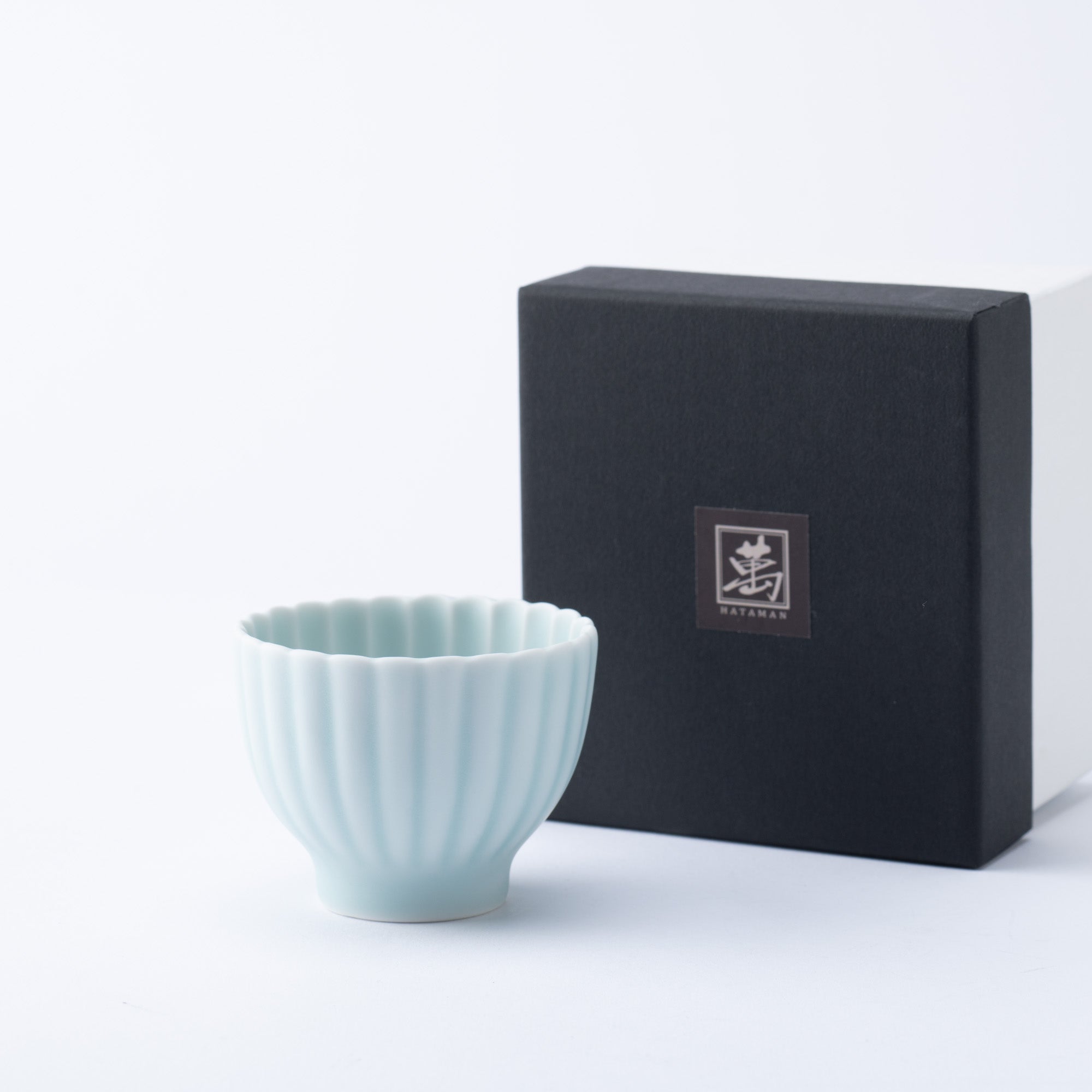
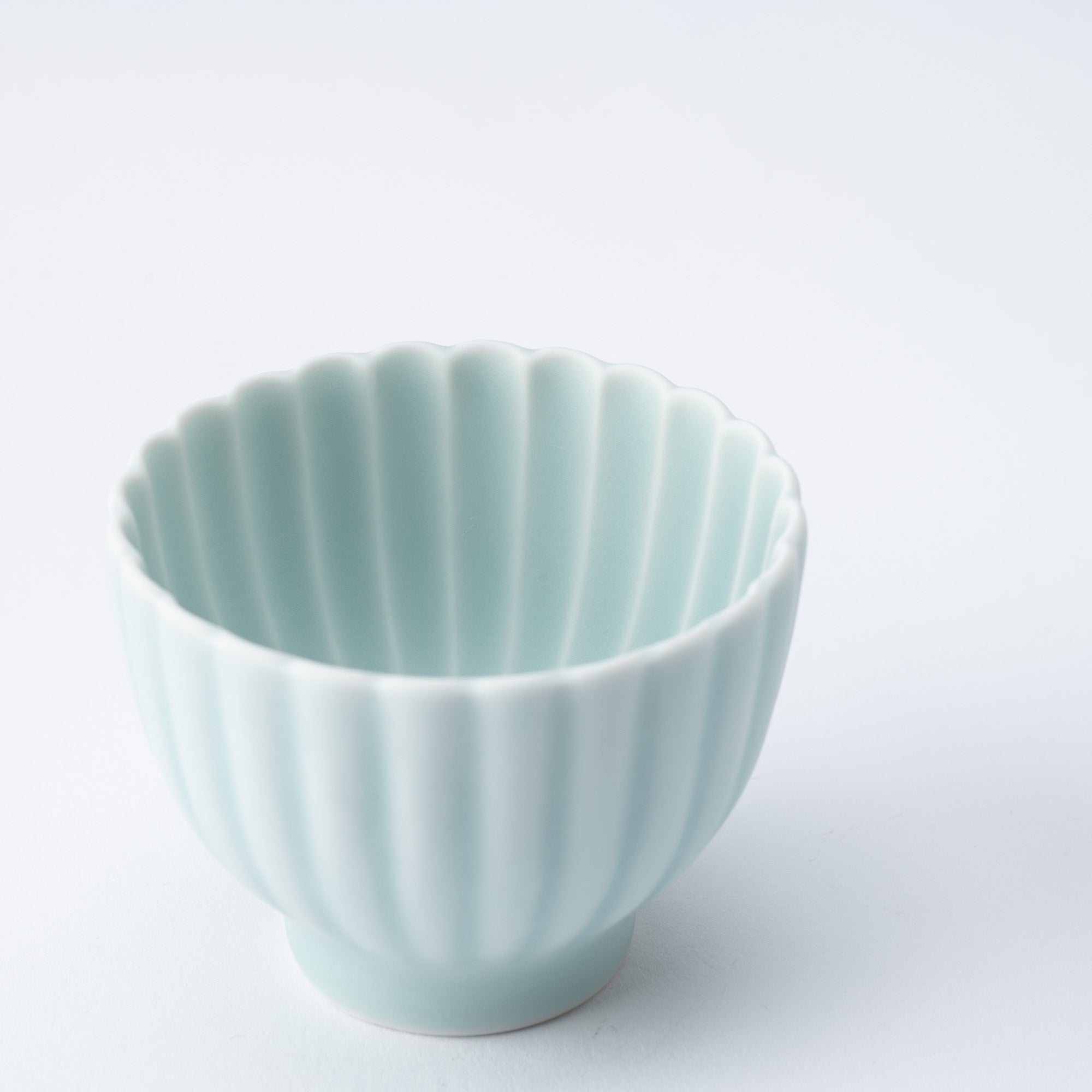
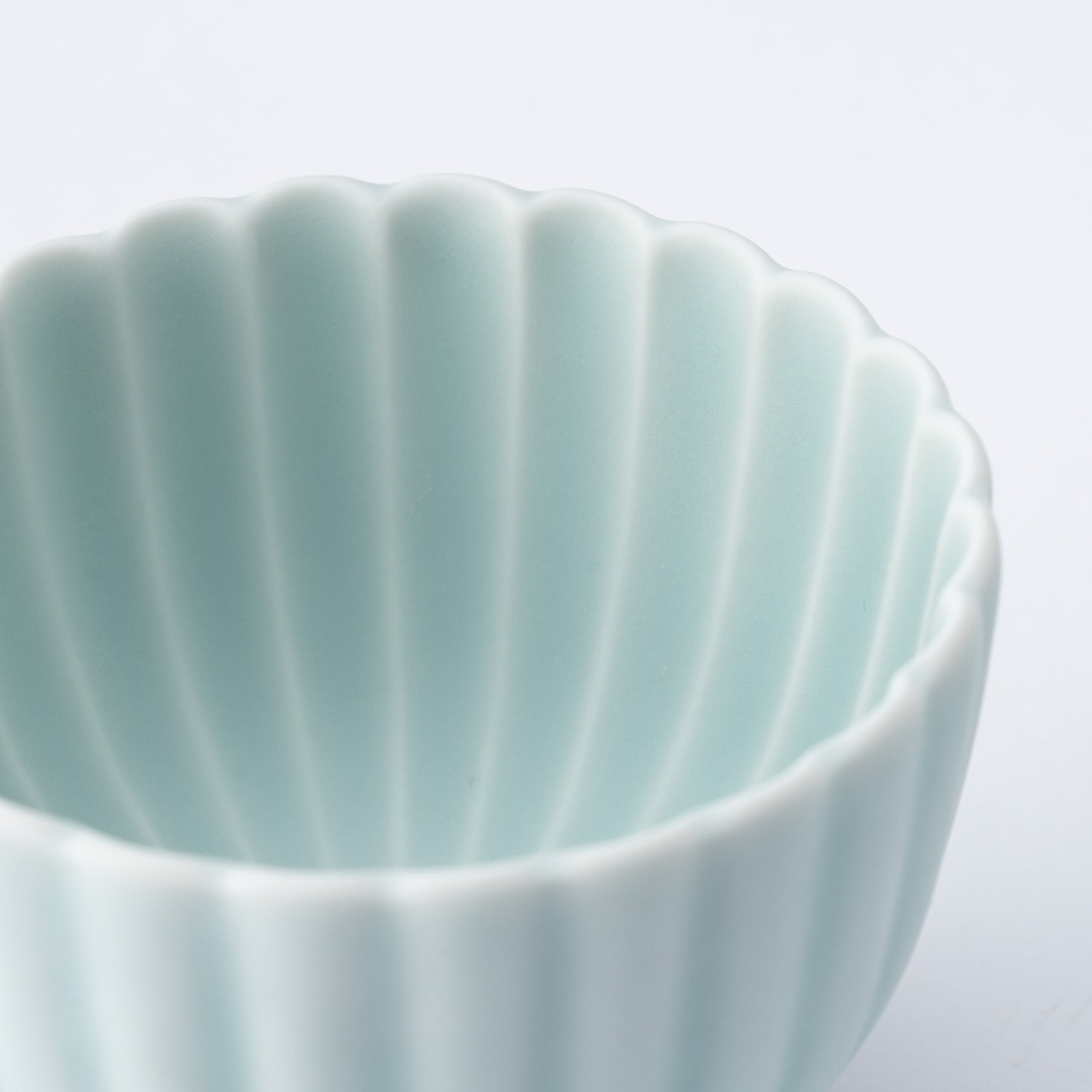
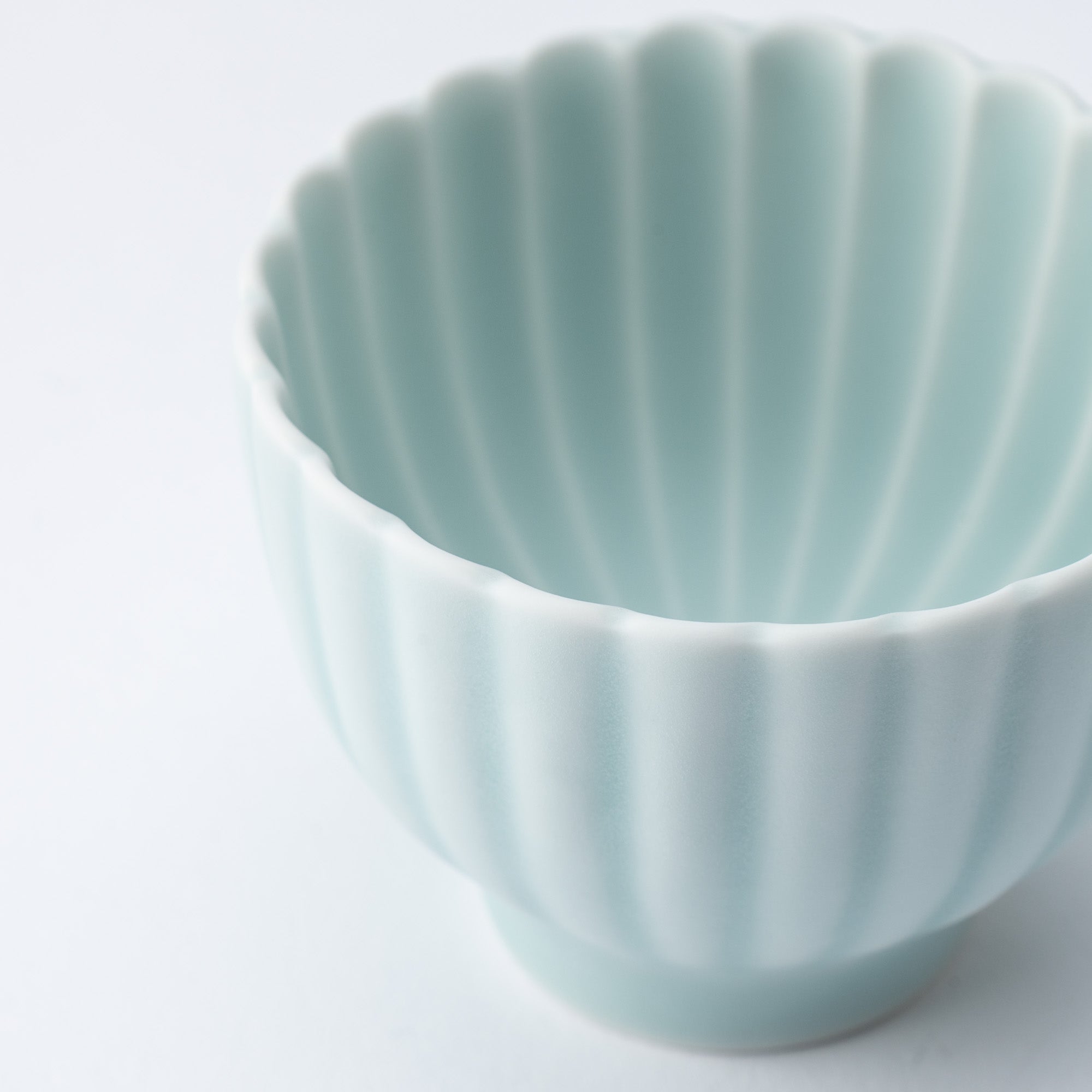
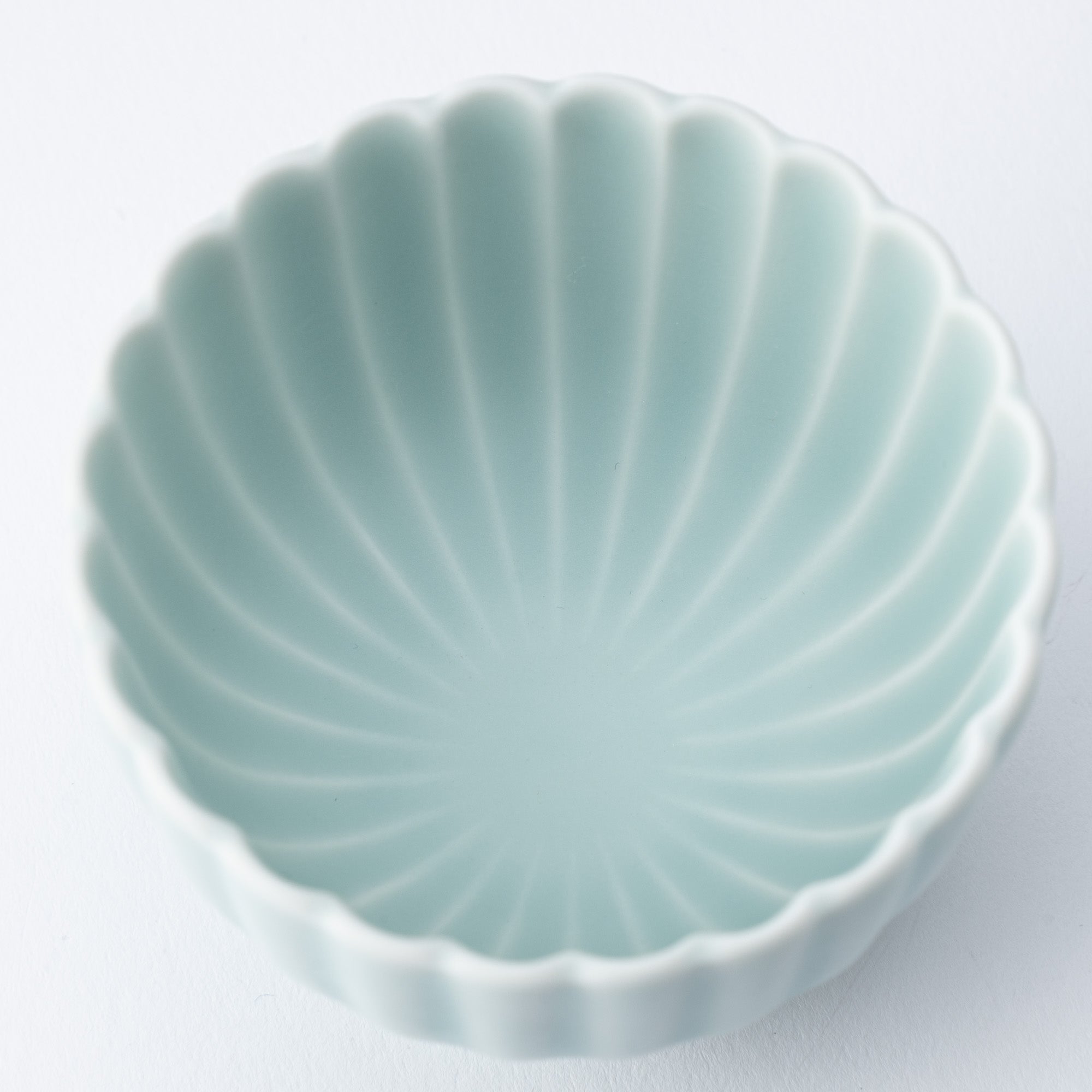
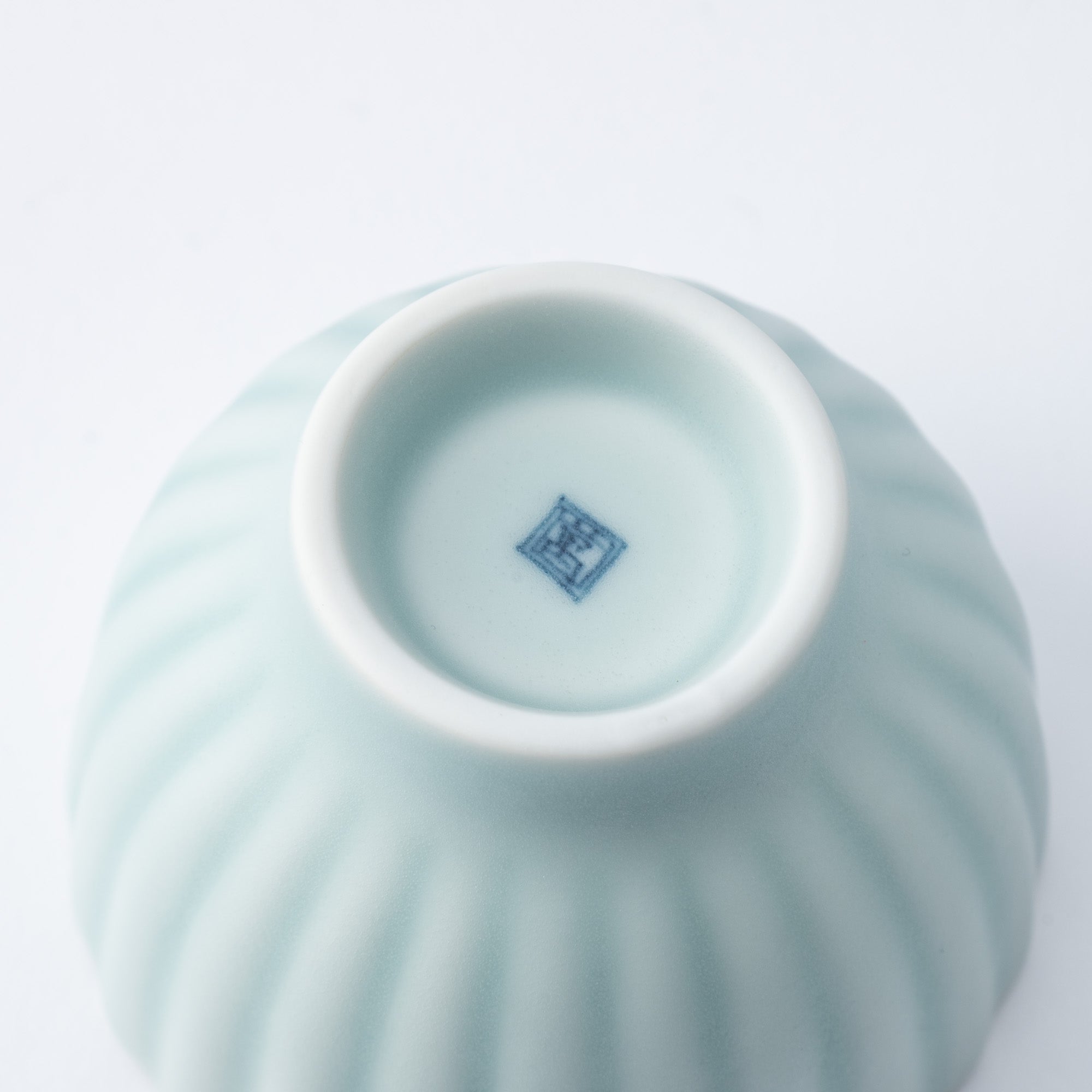
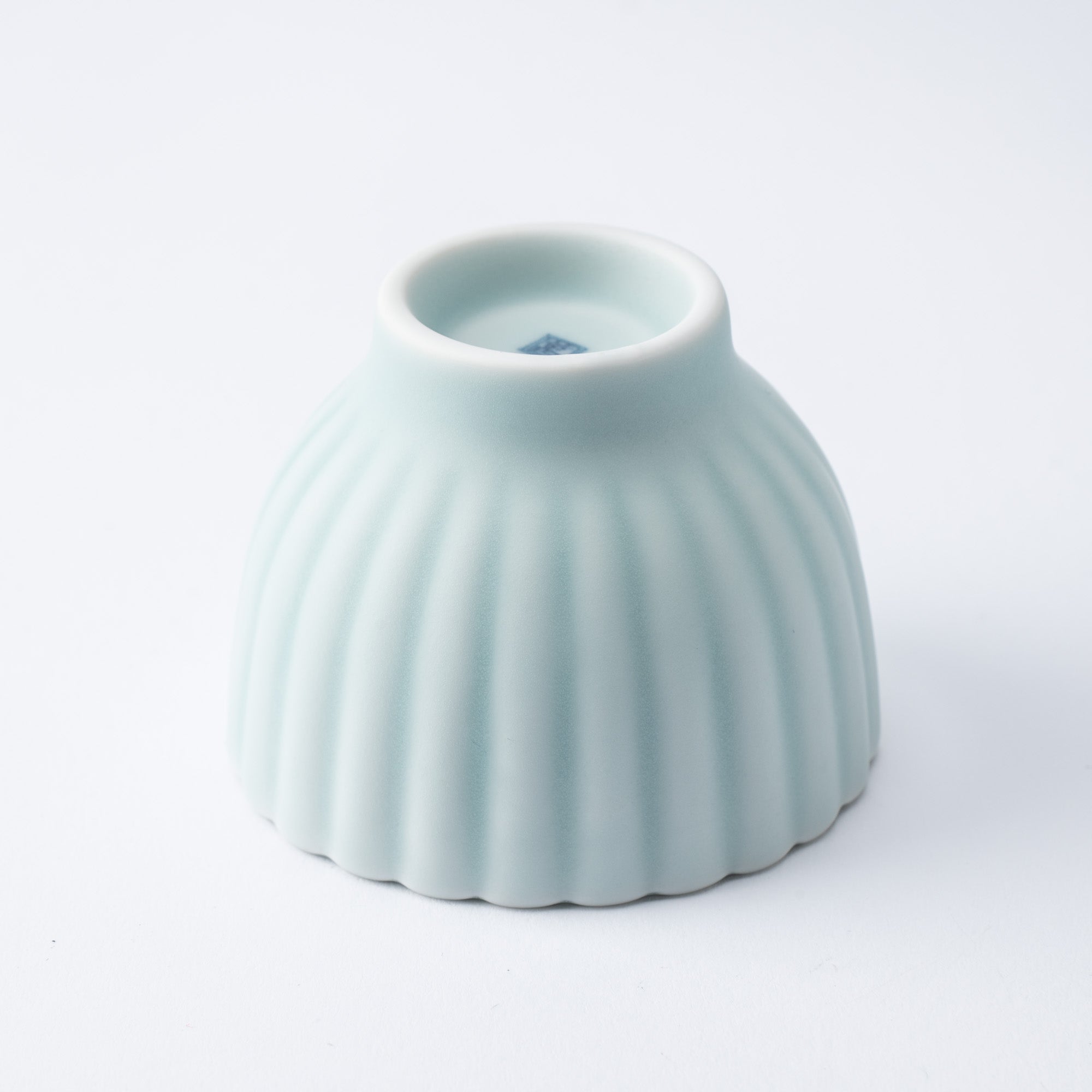
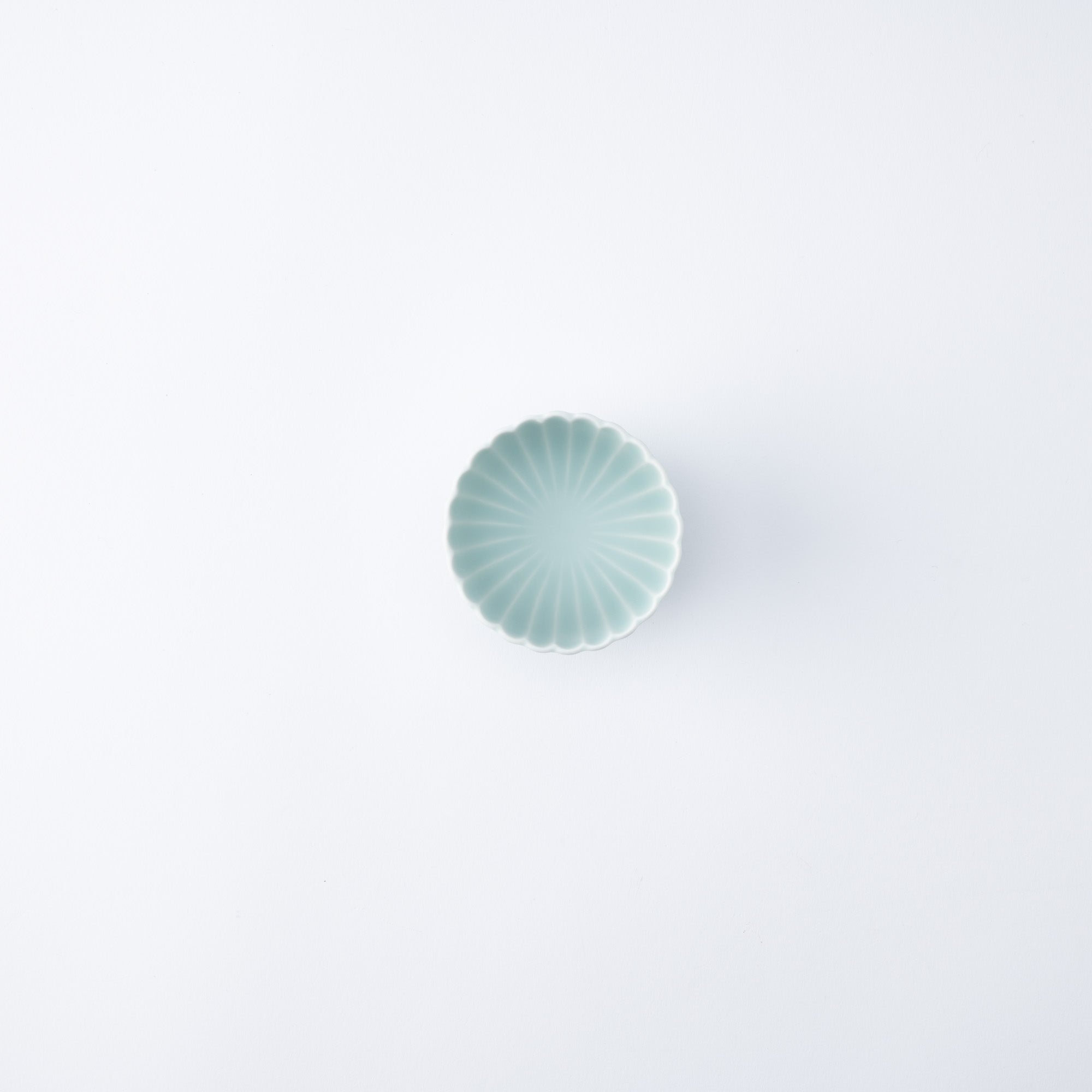


Moist Chrysanthemum Shape Yunomi Japanese Teacup
Estimated Shipping Widget will be displayed here!
This chrysanthemum-shaped yunomi style Japanese teacup, showcases a fresh and elegant shade of celadon that beautifully complements the color of tea. The chrysanthemum, a flower deeply cherished in Japanese culture, represents nobility and grace.
With its matte-textured surface achieved through a sandblasted finish, the yunomi offers a smooth touch and a refreshing coolness, enhanced by soft green hues. Subtle gradations in the glaze create a sense of depth, adding character to each piece.
Perfect for serving freshly brewed hot tea, this yunomi also doubles as a versatile option for presenting small portions of side dishes or appetizers.
DETAILS
| Quantity | 1 |
| Size | D 4.8 cm (1.9 in) x H 7 cm (2.8 in) |
| Capacity | 70 ml (2.4 fl oz) |
| Material | Porcelain |
| Package Type | Paper box |
| Microwave | Yes |
| Dishwasher | Yes |
Maker / Brand
Hataman Touen inherits the rich history and techniques of Imari Nabeshima ware, a tradition spanning 370 years, while embracing the spirit of Japanese culture that enriches the heart and soul. They aim to embody Japanese aesthetics in a modern context and share their story and products with the world.
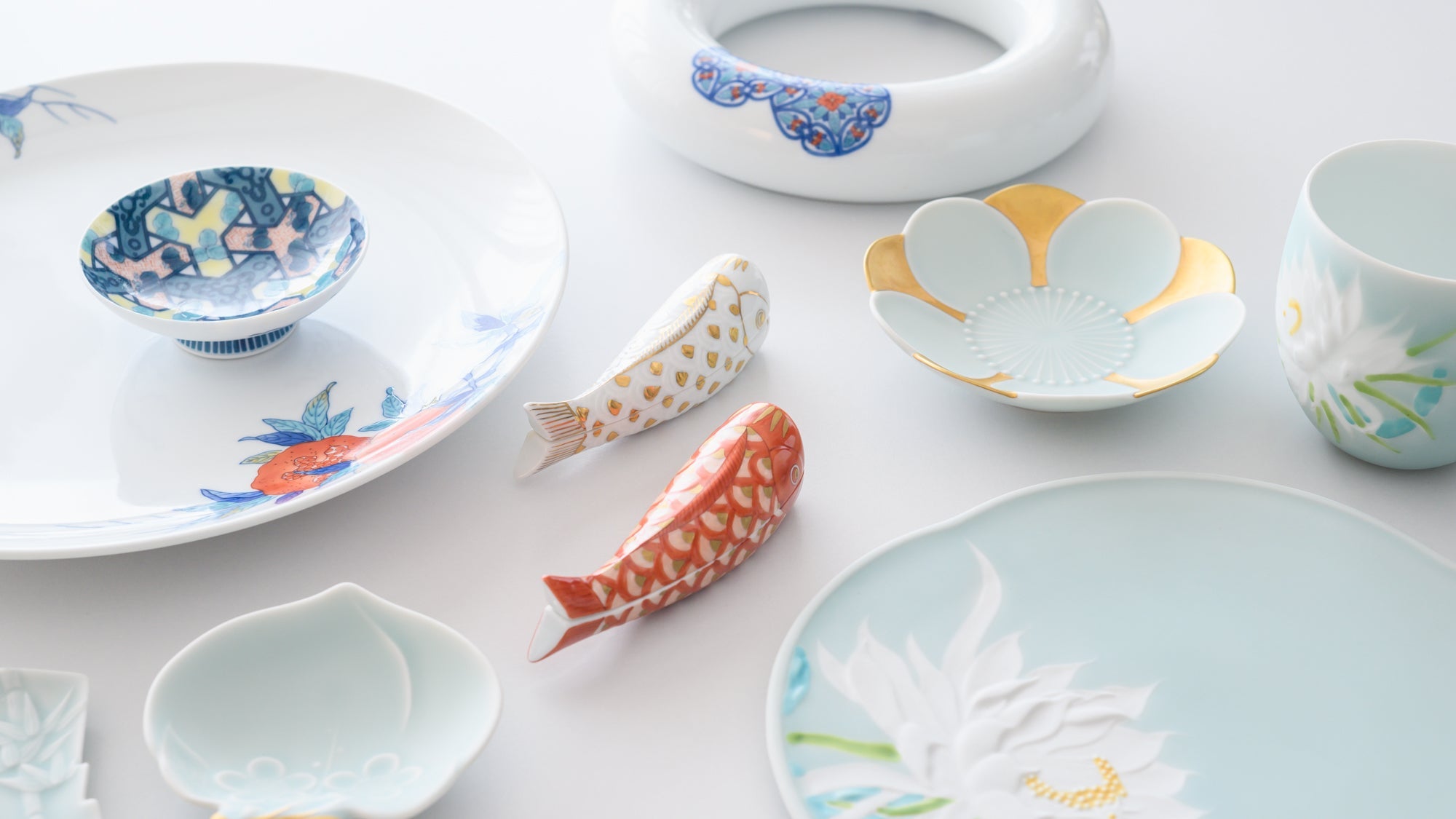
Crafts
Nabeshima ware is a type of porcelain crafted at the meticulously managed Nabeshima domain kiln. This kiln, which operated as a government-run project under the direct supervision of the Saga Nabeshima domain, flourished during the early Edo period (1603–1868 CE).
For approximately 250 years, Nabeshima ware was reserved solely and exclusively for shoguns and feudal lords, with the kilns producing exquisite pieces in styles like iro-Nabeshima (overglaze enamel), ai-Nabeshima (sometsuke), and Nabeshima seiji (celadon). After the feudal system ended, the kilns were privatized, welcoming new potters and giving rise to what is now known as Imari Nabeshima ware.
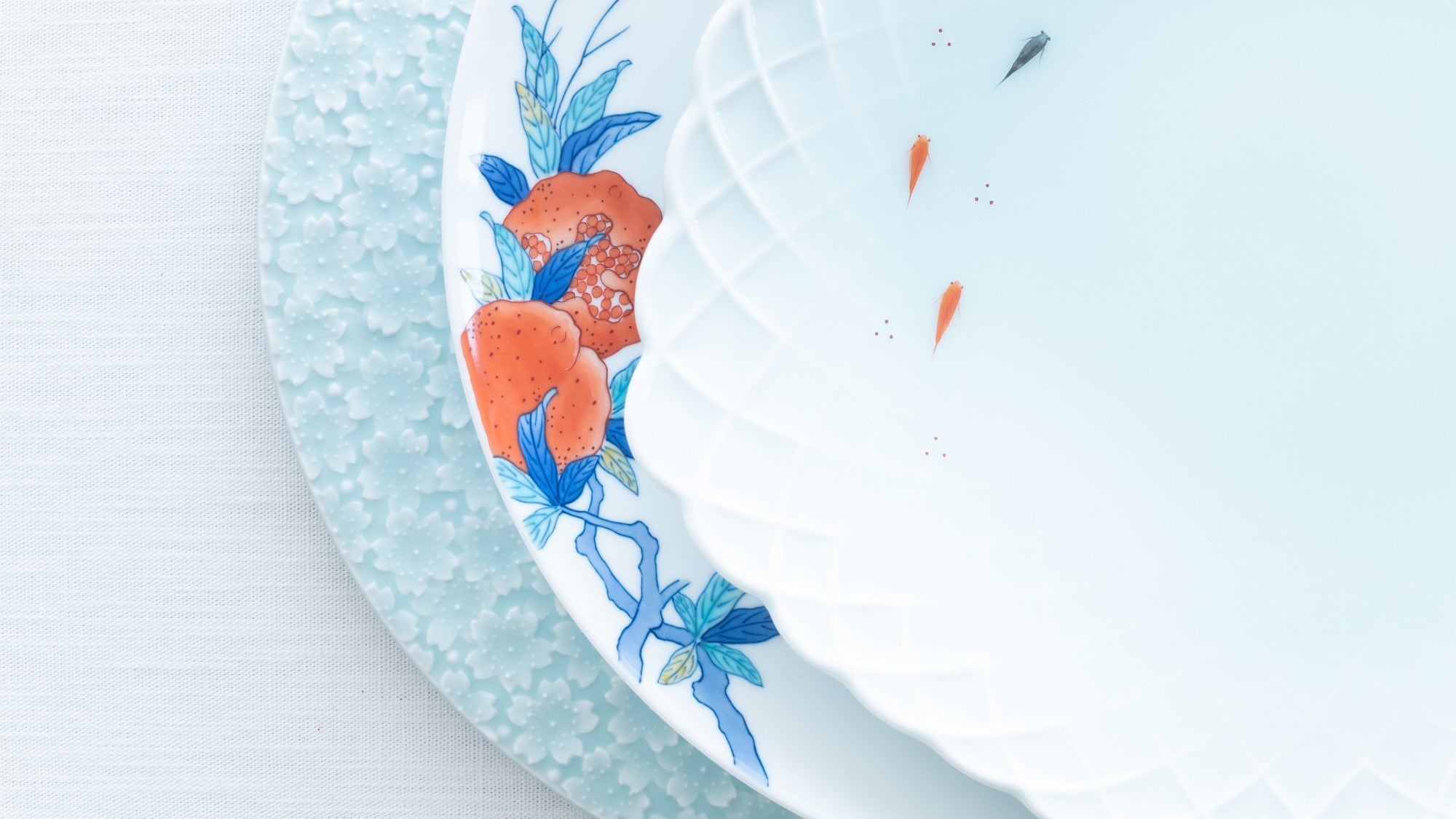
Choose options














Estimated Shipping Widget will be displayed here!
Yunomi Japanese Teacups
Yunomi are a kind of vertical, cylindrical teacup. They are typically used for casual tea times. Because of the large capacity of a yunomi, the area where the tea touches the air is small, so the tea does not get cold easily. They are also suitable for when you want to drink a lot of bancha or hojicha. In sushi restaurants, tea is traditionally served in a yunomi.
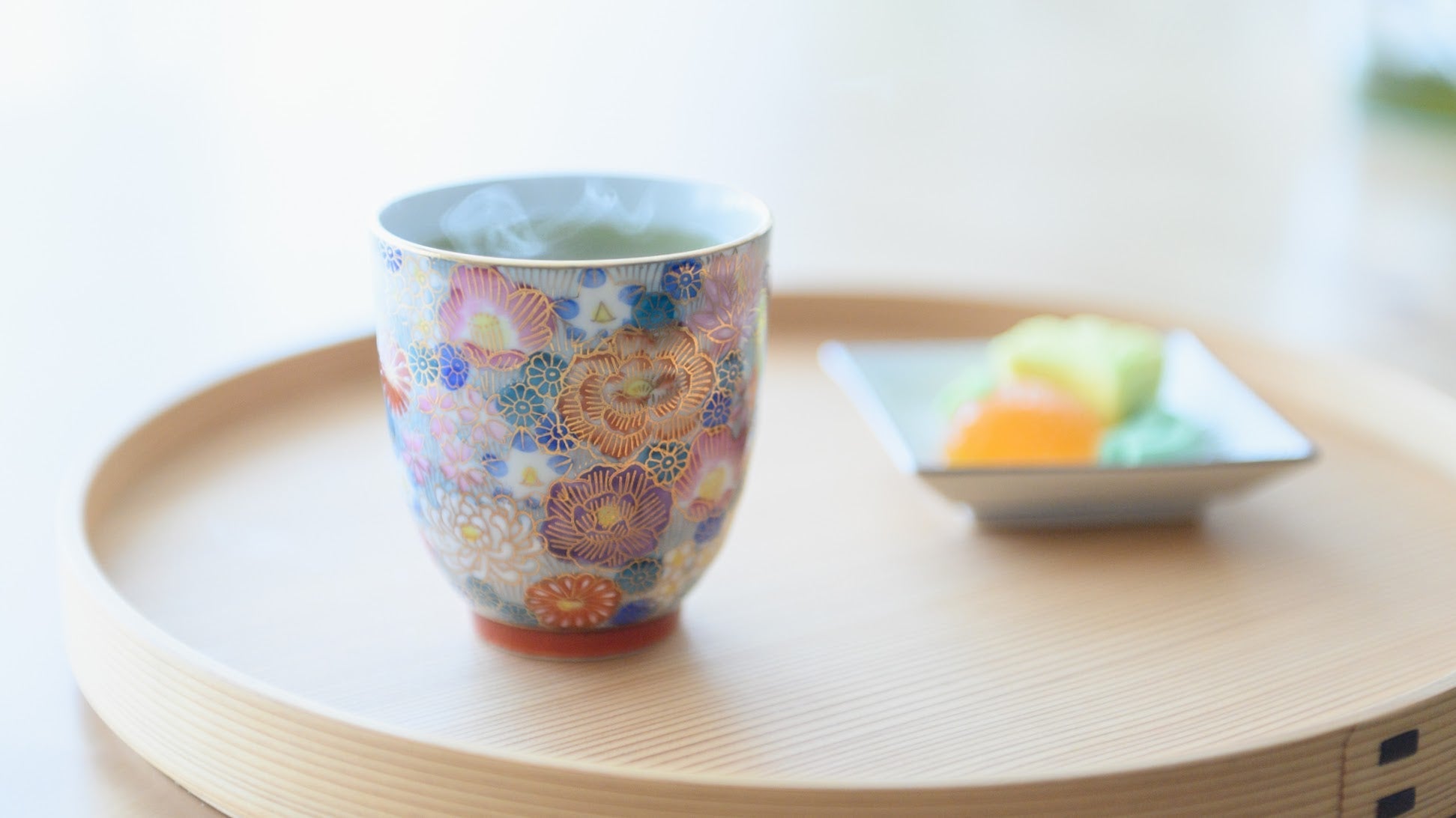
Celadon
Celadon porcelain originated in China and was introduced to Japan by the 10th century. Among the aristocratic classes at that time, celadon wares from China were regarded as the finest imported goods. They adored its mysterious blue and named it "secret-color."
Production of celadon ware began in the Hizen region, the northwestern part of present Kyushu in the early Edo period (1603 CE - 1868 CE), and the technique was later passed on to Kyoto and nearby areas. In 1957, the craft technology was designated a national intangible cultural asset. Celadon continues to be cherished and crafted by many potters and artisans today.
